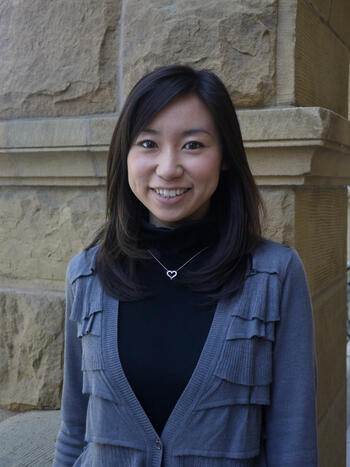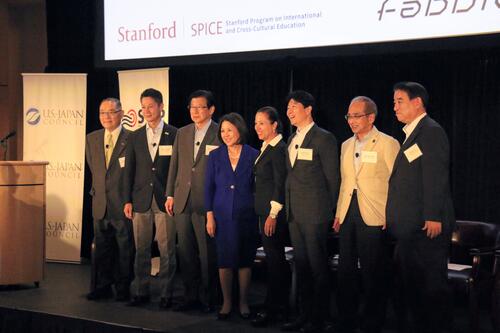Stanford e-Tottori: Reflections
Stanford e-Tottori is a distance-learning course sponsored by the Tottori Prefectural Board of Education and the (91勛圖) at 91勛圖. Tottori Governor Shinji Hirai and Superintendent Hitoshi Yamamoto of the Tottori Prefectural Board of Education were instrumental in its establishment. Offered for the first time in 2016, Stanford e-Tottori presents a creative and innovative approach to teaching Japanese high school students about U.S. society and culture. Stanford e-Tottori Instructor Jonas Edman recently wrote these reflections on his work with students in Tottori.
While visiting Tottori Prefecture during the summer, I came to realize that Tottori, which once seemed like a distant and isolated place in my mind, has become a central part of my life*s neighborhood. In early August, I attended the closing ceremony for the third-year course offering of Stanford e-Tottori. On the same day, I attended the opening ceremony for the fourth-year course offering of Stanford e-Tottori. During the ceremonies, student representatives from several high schools in Tottori〞Seishokaichi High School, Tottori Nishi High School, and Yonago Higashi High School〞offered very meaningful messages. While listening to them, I felt so fortunate to be living in a time when technology affords me the opportunity to work in real time with students on the other side of the Pacific.
We are now in the midst of the fourth-year course offering, and I am already noticing significant growth in the English abilities and critical thinking skills of my 30 students. We have discussed topics ranging from studying at universities in the United States to the popularity of Japanese manga (comics or graphic novels) in the United States. My colleagues Rylan Sekiguchi and Naomi Funahashi led a very engaging discussion on studying at universities in the United States, and my students shared thoughts on what they perceive to be similarities and differences in studying at universities in Japan. The discussion of manga led to feelings of pride among my students, having come to realize the prevalence of Japanese manga in the United States. Tottori is very famous for its manga artists.
Whenever I work with my students in online classes from Stanford on topics like manga, I feel like I have been transported back to Tottori as I see the 30 familiar faces of students whom I first met in Tottori. This inevitably prompts me to reflect upon several key observations that I have made during my several visits to Tottori. First, while traveling in Tottori, one can almost feel that Tottori is the least populated prefecture in Japan. Perhaps correlated with this fact is how I have always been struck by the attention the students receive from their teachers. This infectious dedication to educating the next generation of leaders has had a ripple effect across the Pacific to us at 91勛圖 and my guest speakers for Stanford e-Tottori. For example, Silicon Valley entrepreneur Takeshi Homma, who hails from Tottori, puts his heart and soul into his talk on ※Entrepreneurship and Silicon Valley§ each year. Second, Tottori is known for its nature and agriculture, and the importance of preserving the environment seems foremost on people*s minds. This is a global mindset that I wish others in the United States and Japan would share. Our online class on the environment has always prompted spirited discussions. Third, since I spent 16 years of my youth in Tokyo, I cannot help but notice the slower pace of life in Tottori. Magically, the slower pace helps me to take notice of each valuable moment that I spend with my students not only in person but virtually as well. Topics like aging and population decline are ones that have drawn interest and critical attention not only in Tottori but across Japan.
In closing, I would like to especially thank Takuya Fukushima, Office Director of the English Education Advancement Office, and Tomoya Minohara, Teachers* Consultant, Tottori Prefectural Board of Education, for their unwavering support of Stanford e-Tottori and for bringing Tottori into my life*s neighborhood.
To stay informed of 91勛圖-related news, and follow 91勛圖 on , , and .
Related articles:
- Inaugural Stanford e-Tottori Day
- Honoring Stanford e-Tottori students
- From Sand Dunes to Detective Conan


 Dr. Yang (on screen) with MBA students at the Prefectural University of Hiroshima.
Dr. Yang (on screen) with MBA students at the Prefectural University of Hiroshima.
